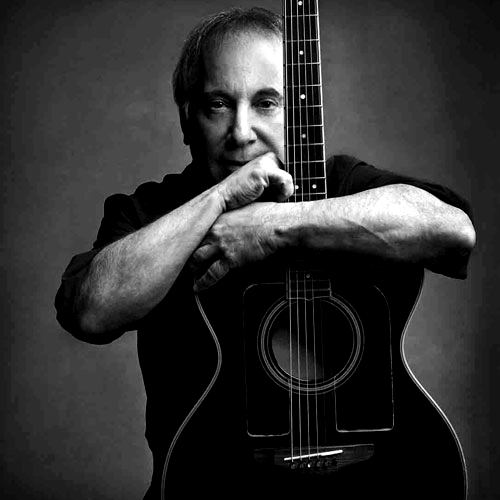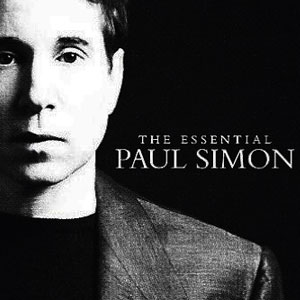Paul Simon Still Inspiring
Paul Simon SO BEAUTIFUL OR SO WHAT. Decca
With so much hype around at the moment for new artists (many of dubious talent) it’s refreshing to review an album from a singer/songwriter who started his career back in 1957 and continues to record wonderful material. Back in 2007 Simon released SURPRISE, an album of brand new material produced by Brian Eno and acclaimed by critics. SO BEAUTIFUL OR SO WHAT is his latest album and the reaction to it has been even more complementary, for good reason. But before I get to the album, here’s some background to this highly influential and successful artist:
In early 1964, Paul Simon and Art Garfunkel got an audition with Columbia Records, whose executive Clive Davis was impressed enough to sign the duo to a contract to produce an album. Simon and Garfunkel’s first LP, Wednesday Morning, 3 A.M., was released on October 19, 1964 and consisted of twelve songs in the folk vein, five of them written by Simon. The album initially flopped, but East Coast radio stations began receiving requests for one of the tracks, Simon’s ‘The Sounds of Silence’. Their producer, Tom Wilson, overdubbed the track with electric guitar, bass, and drums, releasing it as a single that eventually went to number one on the pop charts in the USA.
Simon had gone to England in 1965 after the initial failure of Wednesday Morning, 3 A.M., pursuing a solo career. He returned to the United States, however, to reunite with Garfunkel after “The Sounds of Silence” had started to enjoy commercial success. Together they recorded four more influential albums: Sounds of Silence; Parsley, Sage, Rosemary and Thyme; Bookends; and the hugely successful Bridge Over Troubled Water. Simon and Garfunkel also contributed extensively to the soundtrack of the Mike Nichols film The Graduate (1967).
Simon pursued solo projects after the duo released their popular album Bridge over Troubled Water. Occasionally, he and Garfunkel did reunite, such as in 1975 for their Top Ten single “My Little Town”, which Simon originally wrote for Garfunkel, claiming Garfunkel’s solo output was lacking “bite”. The song was included on their respective solo albums: Paul Simon’s Still Crazy After All These Years; and Garfunkel’s Breakaway. Contrary to popular belief, the song is not at all autobiographical of Simon’s early life in New York City. In 1981, they got together again for the famous concert in Central Park, followed by a world tour and an aborted reunion album, to have been entitled Think Too Much, which was eventually released (without Garfunkel) as Hearts and Bones. Together, they were inducted into the Rock and Roll Hall of Fame in 1990.
While driving his car in late 1984, Simon listened to a cassette of the Boyoyo Boys’ instrumental “Gumboots: Accordion Jive Volume II”. Interested by the unusual sound, he wrote lyrics to the number which he sang over a re-recording of the song. It was the first composition of a new musical project that became the celebrated album GRACELAND, an eclectic mixture of musical styles including pop, a cappella, isicathamiya, rock, and mbaqanga. Simon felt that he had nothing to lose. He traveled to South Africa in an attempt to embrace the culture and find the most comfortable environment for recording the album. Sessions in Johannesburg took place in February 1985. Overdubbing and additional recording was done in April, 1986, in New York. The sessions featured many South African musicians and groups, particularly Ladysmith Black Mambazo. Simon also collaborated with several artists of his own culture, singing a memorable duet with Linda Ronstadt in and playing with Los Lobos in ‘All Around the World or The Myth of the Fingerprints’.
Warner Bros. Records had serious doubts about releasing an album of this eclecticism to the mainstream, but when it did in August 1986, Graceland was praised by critics and the public and became Simon’s most successful solo album. Slowly climbing the worldwide charts, it reached #1 in many countries, including the UK, Canada, Australia and New Zealand, and peaked at #3 in the U.S. It was the second-best-selling album of 1987 in the U.S., selling five million copies and eventually reaching 5 times Platinum certification. Another seven million copies were sold internationally to become his best-selling album. Much of the success of the album was due to the lead single, the upbeat “You Can Call Me Al”, whose lyrics describe a man experiencing an identity crisis. The track featured many memorable elements – a catchy synthesizer riff, an easy whistle solo, and an unusual bass run in which the second half was a reversed recording of the first half. “You Can Call Me Al” was accompanied with a humorous video featuring actor Chevy Chase, which introduced Simon to a new audience through MTV. In the end, the track reached UK top 5 and the U.S. top 25. Further singles, including the title track, ‘The Boy in the Bubble’ and ‘Diamonds on the Soles of Her Shoes’, were not commercial hits but became radio standards and were highly praised.
At age 45, Simon found himself back at the forefront of popular music. He received the Grammy Award for Album of the Year in 1987 and also Grammy Award for Record of the Year. He also embarked on the very successful Graceland Tour, which was documented on music video. Simon found himself embracing new sounds, a fact that some critics viewed negatively – however, Simon reportedly felt it as a very natural artistic experiment, considering that “world music” was already present on much of his early work, including such Simon & Garfunkel hits as “El Condor Pasa” and his early solo recording “Mother and Child Reunion”, which was recorded in Kingston, Jamaica. One way or another, Warner Bros. Records (who by this time now controlled and reissued all his previous Columbia albums) re-established Simon as one of their most successful artists. In an attempt to capitalize on his renewed success, WB Records released the album Negotiations and Love Songs in November 1988, a mixture of popular hits and personal favorites that covered Simon’s entire career and became an enduring seller in his catalogue.
Page: 1 2
|
|

|

The Answer |
LATEST GALLERY IMAGES

The Price of Food 
The Invisible Enemy |
|
|




